At the beginning of the transfer window, Anderlecht announced the signing of the highly promising winger Isaac Tshibangu from the Congolese club TP Mazembe.
For most football fans, Tshibangu is a complete stranger but he was already mentioned by The Guardian’s annual analysis as one of the 60 best young talents in world football in 2020 and he was one of the most promising African players to still play in the continent.
Born in 2003, Tshibangu has accepted a pay cut to play in Europe under the former Man City and EPL star Vincent Kompany, who also has Congolese roots. In this Isaac Tshibangu scout report, we’ll see what the young winger can bring to his new club tactics and some areas of improvement his coaches should focus on.
Dribbling: quantity and quality
Tshibangu is a right-footed winger who plays mostly on the left side of the pitch. He’s usually very wide, looking to receive the ball to his feet and then run at defenders to take advantage of his pace and dribbling skills. His heatmap shows how he’s active mostly on the left and hugging the touchline. Later in the analysis, we’ll see if this positioning is optimal and the effect it has on Tshibangu performances
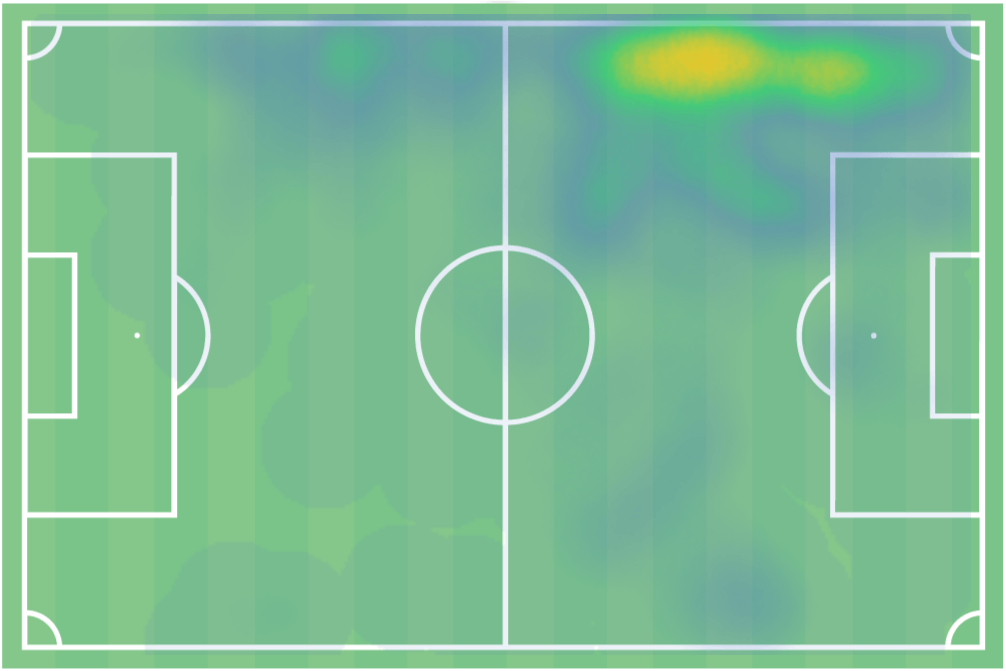
When watching Tshibangu, he immediately catches one’s attention for his dribbling. Regardless of the side of the pitch, he’s in and also when he’s in central areas, he’s trying to beat defenders with his dribbling.
Tshibangu is a very direct player and despite his young age and the pressure he faces playing at the highest level of the very physical and intense African football, he trusts himself greatly and isn’t afraid of running at defenders. With a very good combination of skill and pace, he’s a threat in every situation and has the ability to affect games by pinning his marker and preventing him from joining the attack.
In the map below, we see all the dribbles Tshibangu attempted in his two seasons in the CAF Champions League. We can see he’s most active in the final third and from the left but also likes to get past players in deeper areas or when he gets the ball in different locations.
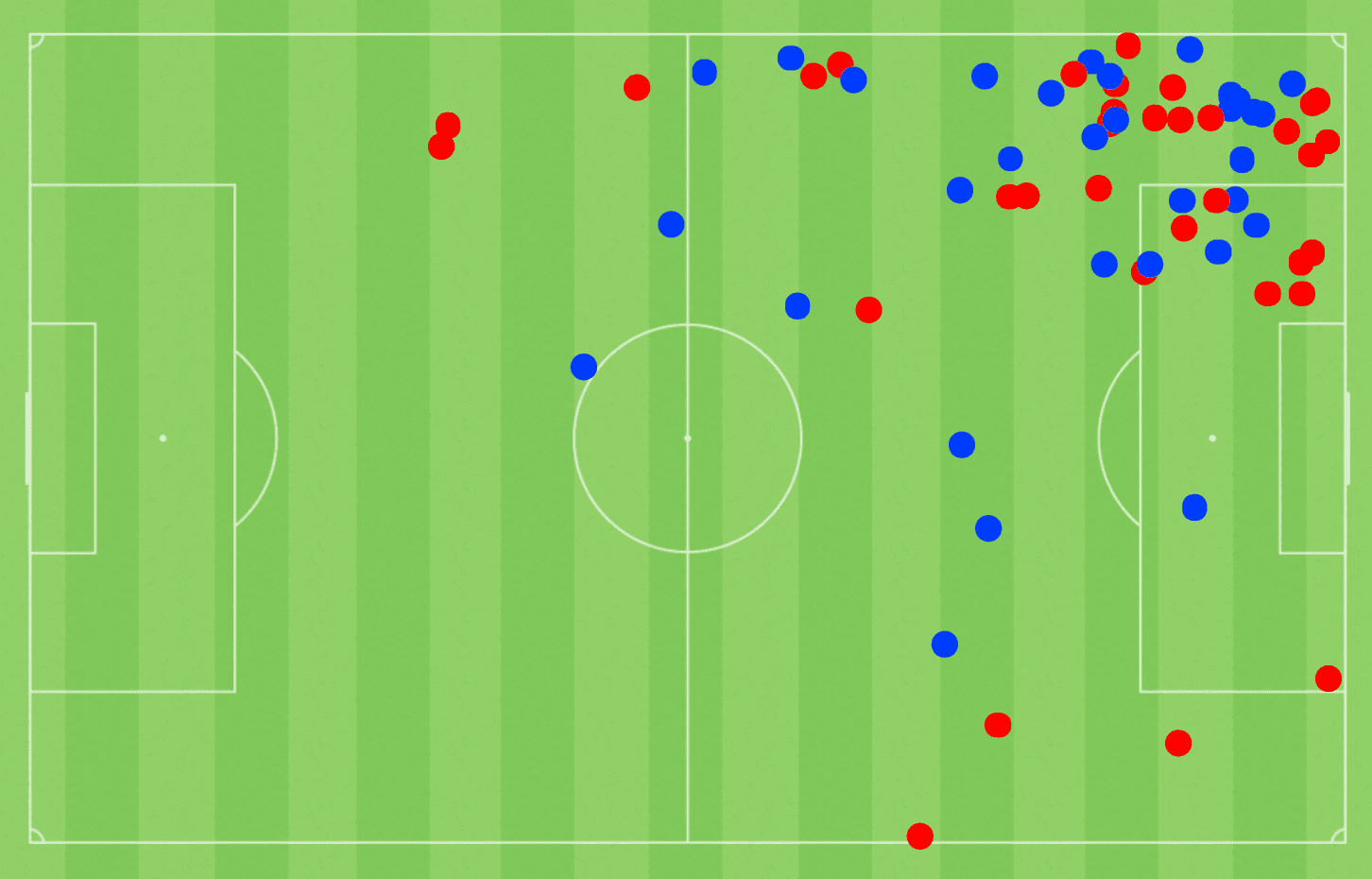
This confidence in his dribbling also has a part of suboptimal decision-making. Tshibangu’s first idea when he receives the ball is to dribble and sometimes he has better alternatives he skips. At his age, this is something normal but needs to be addressed and coached to get his full potential.
Tshibangu’s 6.89 dribbles per 90 are a very high figure at any level and even more if we consider his young age. However, he completes just 48% of those dribbles, which is quite an average proportion. As mentioned, he needs to pick better when to dribble to avoid some unnecessary mistakes.
When facing rivals in one-on-one situations, Tshibangu is an unpredictable player who can go left or right and doesn’t really show a preference between coming inside to his strong right foot or going wide and continue running by the wing. His acceleration and skill to send rivals the wrong way with body feints and stepovers are perfect for a winger and he’ll surely be able to bring that to the Belgian league.
In the sequence below, we see Tshibangu’s distinctive dribbling ability in action. In the first picture, he’s running at the defender and we see the moment takes the touch to get past him. By keeping his options open and being direct, Tshibangu forces the defender to make a decision and as soon as that happens he’s fast and skilled to go the other way. In the second picture, we can see how much advantage he wins with his acceleration to get into the box at top speed.
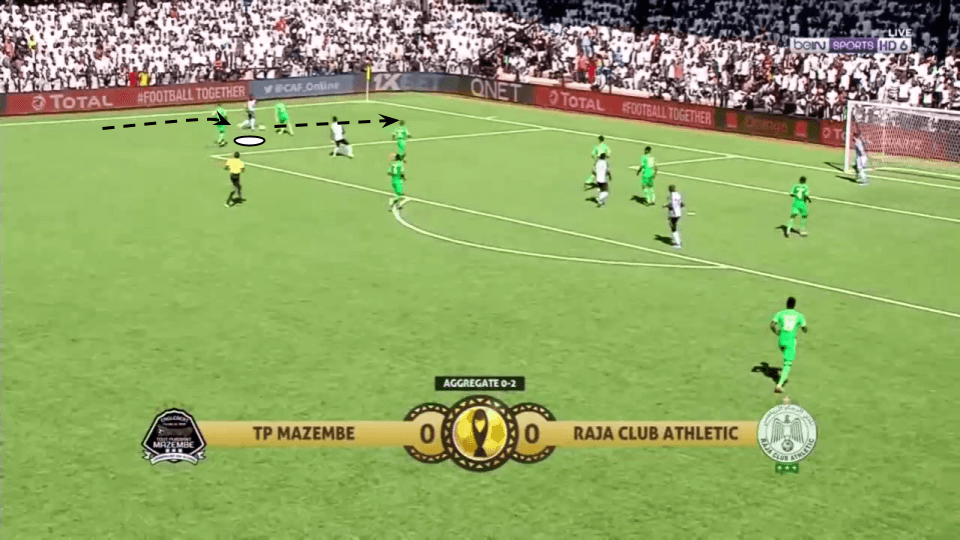
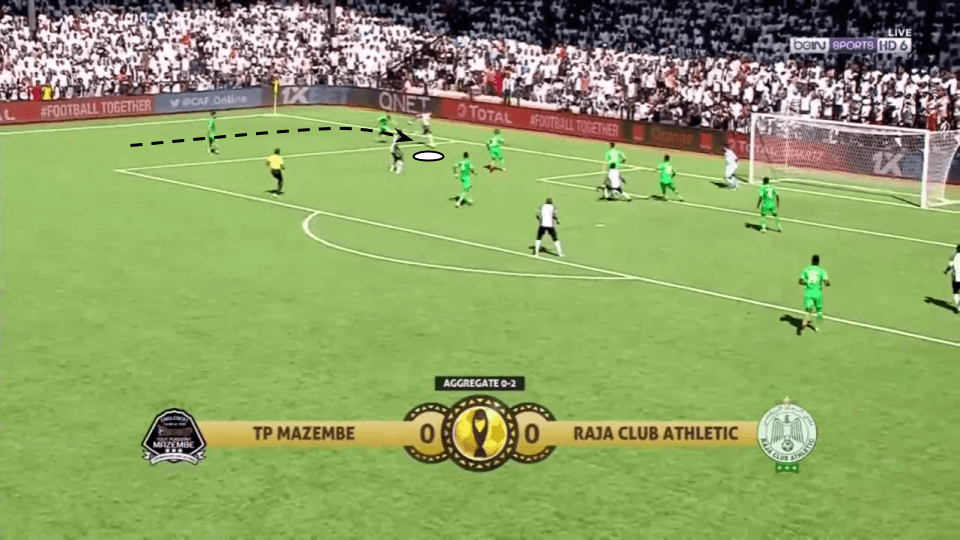
Even if he excels with some space ahead of him to use his change of pace, Tshibangu can also escape difficult situations in tight spaces. He’s very skilled and creative in finding the smallest spaces left by rivals and using them to get away from pressure. In this, he reminds of his idol, PSG’s star Neymar.
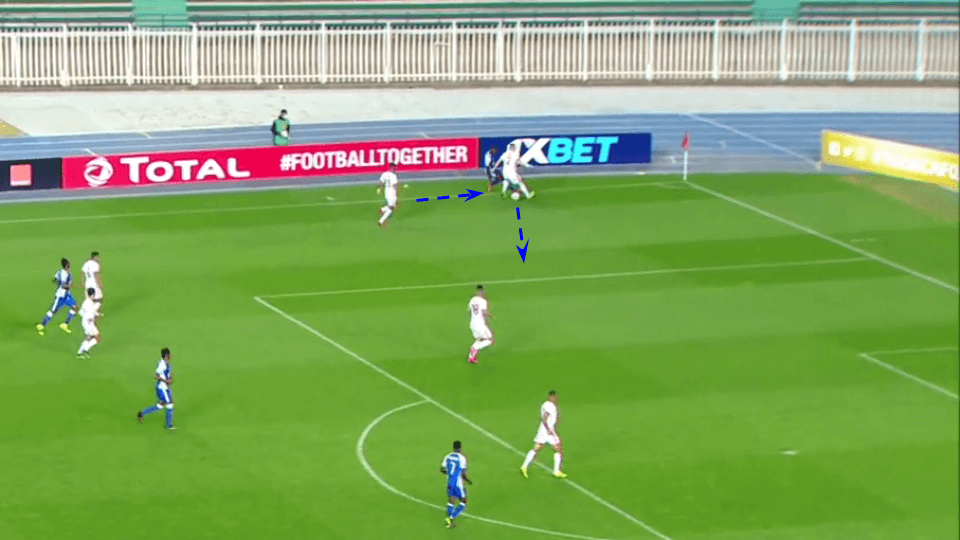
Finally, in the last couple of years, Tshibangu has developed his physicality and he no longer looks like a teenage player. Now he uses his strength to resist challenges and turn under pressure, making it harder for rivals to push him off the ball. This gain of size hasn’t affected his pace or agility and it will be crucial to perform at a higher level.
The next sequence is a good example of Tshibangu’s strength to hold the ball and turn with a rival challenging him. In the first picture, we can see how he uses his body to shield the ball while he takes a touch to turn and get away from the defender. In the second one, he shows one more time how much he likes to dribble and gets past another defender with a nice stepover.
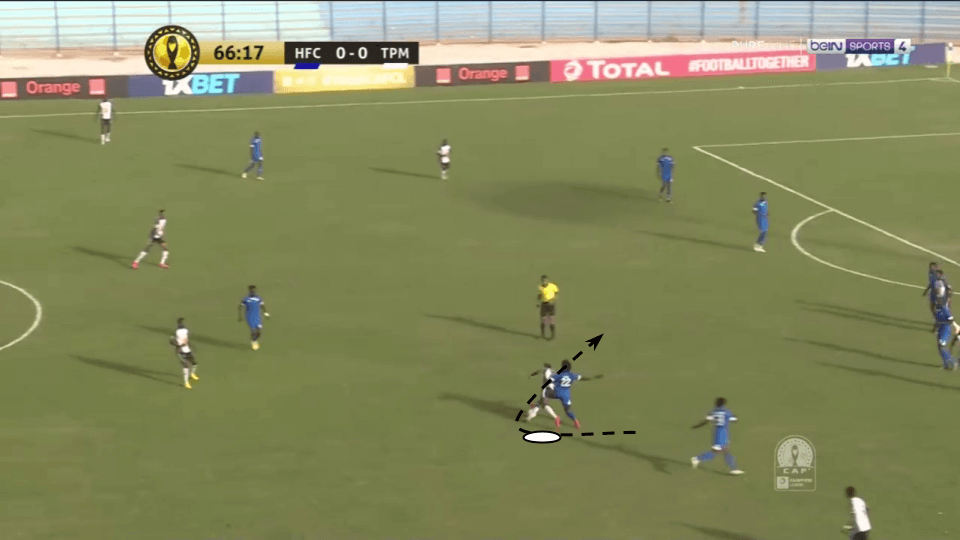
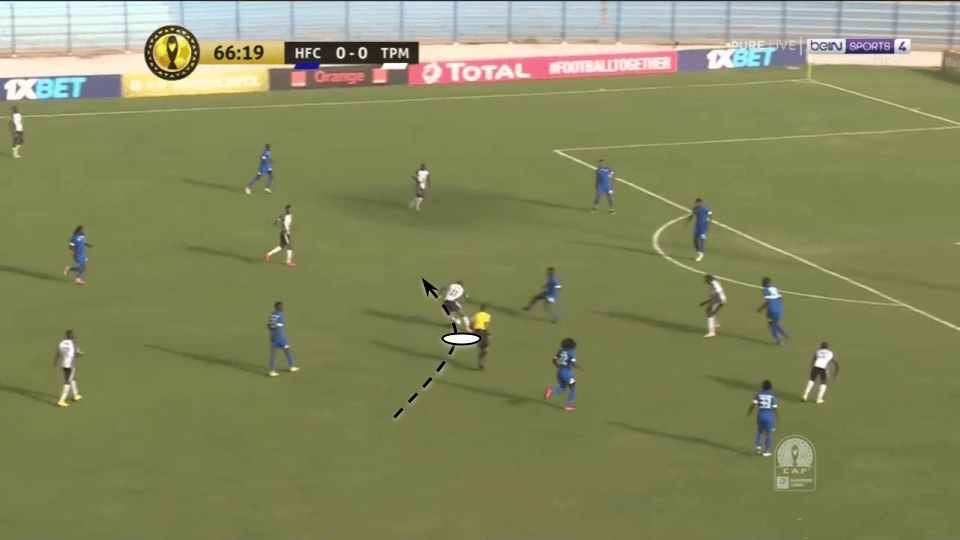
In this section of the analysis, we have reviewed Tshibangu’s dribbling skills. He has all the conditions to constantly beat defenders from the wing and he knows it, resulting in a lot of self-confidence. However, this confidence makes him miss good alternatives to dribbling and is something he needs to improve.
Pass & movement: combinations & runs
Tshibangu is usually positioned wide and waiting to receive the ball in a good situation to exploit his dribbling. The map showing his dribbles in the previous section of this scout report gives us a good idea of the zones where he usually receives the ball and we could expect Anderlecht to use him in a similar role.
When he gets involved in the creation, he usually makes simple passes to nearby teammates and isn’t someone who will consistently progress or break lines with his passes. With 23.59 passes per 90 and an accuracy of 83%, he prefers to move the ball around until he gets the opportunity to run rather than creating by himself.
An interesting aspect of Tshibangu’s playing style is his dynamism when he gets on the ball. When he doesn’t dribble, Tshibangu likes to pass and move and is a good option for his team to progress through quick combinations. His pace is key here as he can leave defenders behind and receive the ball back in a better position to create. He has good technique in his passes and can find his teammates even when the passes need to be very precise.
In the example below, Tshibangu is running towards his goal with a rival pressing him intensely. He sees a good passing option and finds his teammate run with a very accurate pass with the outside of his right foot. Right after the pass, Tshibangu changes the direction of his movement and gets past the defender with a burst of pace to receive the ball back in a good situation to run at the next rival.
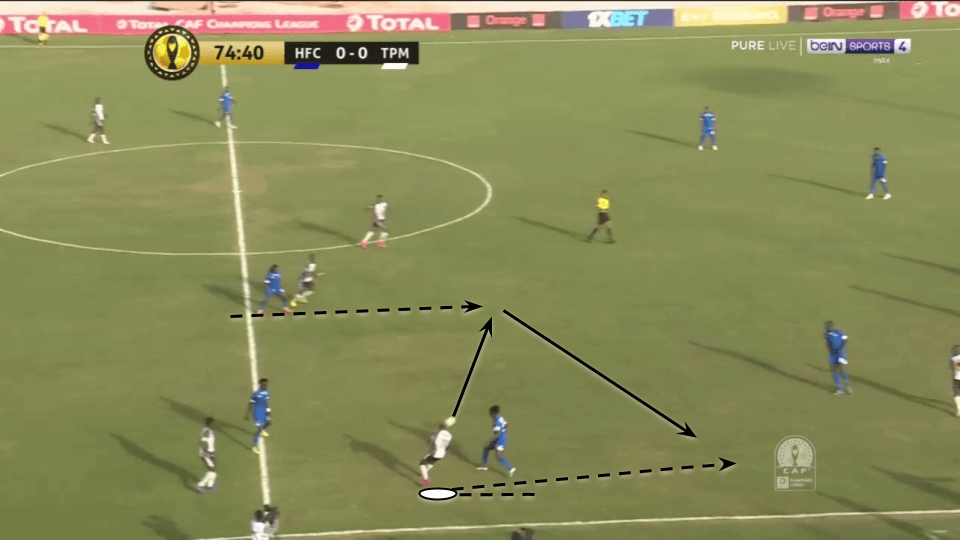
Despite his decisions not always being optimal, Tshibangu has shown he understands the importance of attracting players when he has the ball to then give the ball to an unmarked teammate. He doesn’t always recognize these situations but at his age, doing it sometimes is a promising start. With the fear he generates in the opposition thanks to his dribbling, he will usually attract more than one rival so recognition of which teammate has been left free is a very important thing if he wants to step up his offensive threat.
Below, we have an example of one of the times Tshibangu understood how to attract players to then pass the ball. He’s running from the left side and he attracts two rivals who try to stop him from getting into a scoring position. At the same time, the left-back makes an overlapping run and Tshibangu waits until the exact moment to release the ball and put his teammate in a great position to cross.
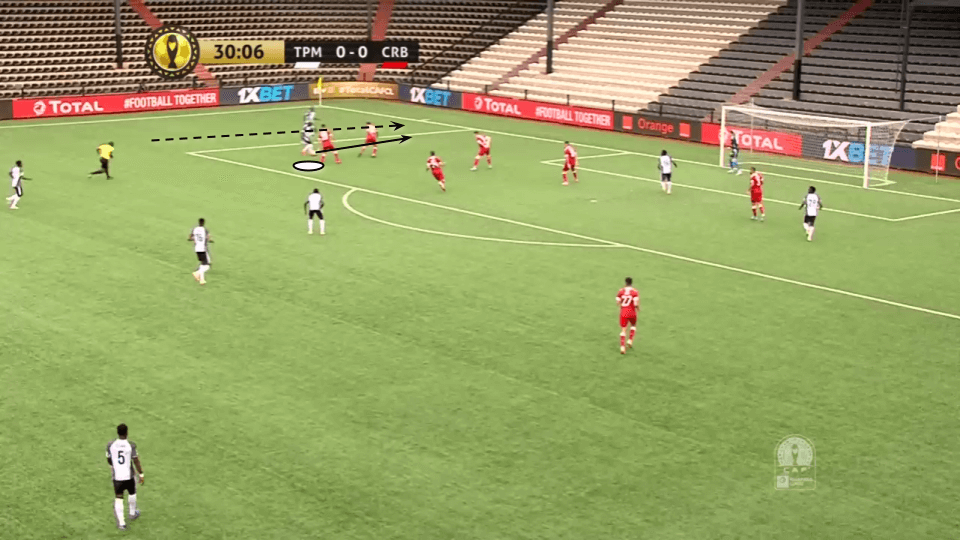
And in this second example, Tshibangu displays a promising ability to attract and assist, this time from a more central area. He’s again running at the defensive line and as soon as the rival right centre-back moves to block his run, Tshibangu plays the ball to the teammate that has just been left free. There are still many times when he fails to understand this kind of plays but these glimpses show he has the potential to do it well consistently.
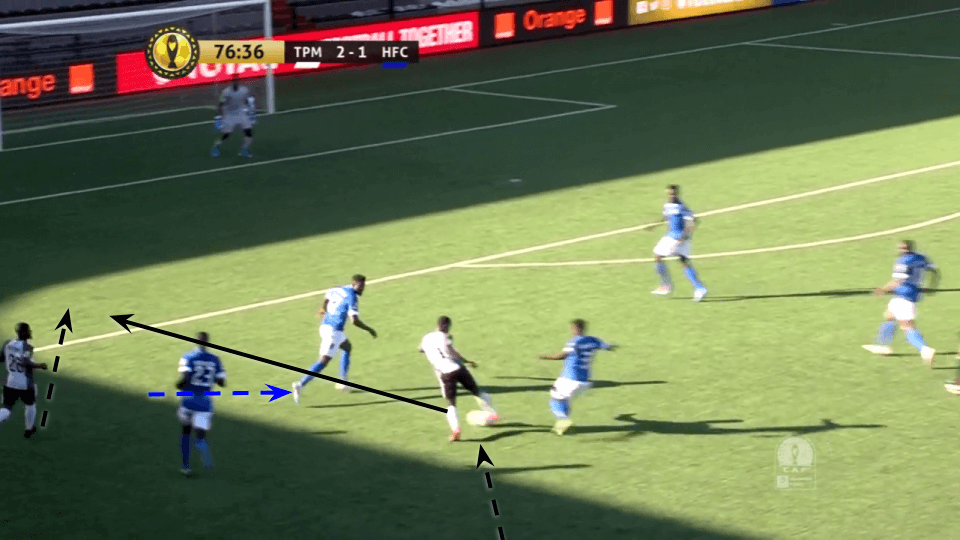
Another promising aspect of Tshibangu’s game is his capacity to run in behind and not always receive the ball to his feet. Again, this is not something he constantly does but has shown his capacity to do it, which should be the basis for future improvements.
By running in behind, Tshibangu can use his pace differently and get past his marker without dribbling him. Encouraging these movements will result in the young Congolese getting more and more into good scoring positions and will add more unpredictability to his game. He needs to understand that by receiving the ball behind the defensive line and in more central positions he avoids the need of dribbling past the defender and also creates space for other teammates to play.
Below we see one of these runs. At the start of the play, Tshibangu is wide and waiting to receive to his feet but he sees the space between the rival centre-back and full-back and also behind the defensive line and quickly runs into it to receive a great through ball from midfield. It’s normal for an 18-year-old forward to miss some of these opportunities so the fact that he spots some and knows how to take advantage of them is a great signal.
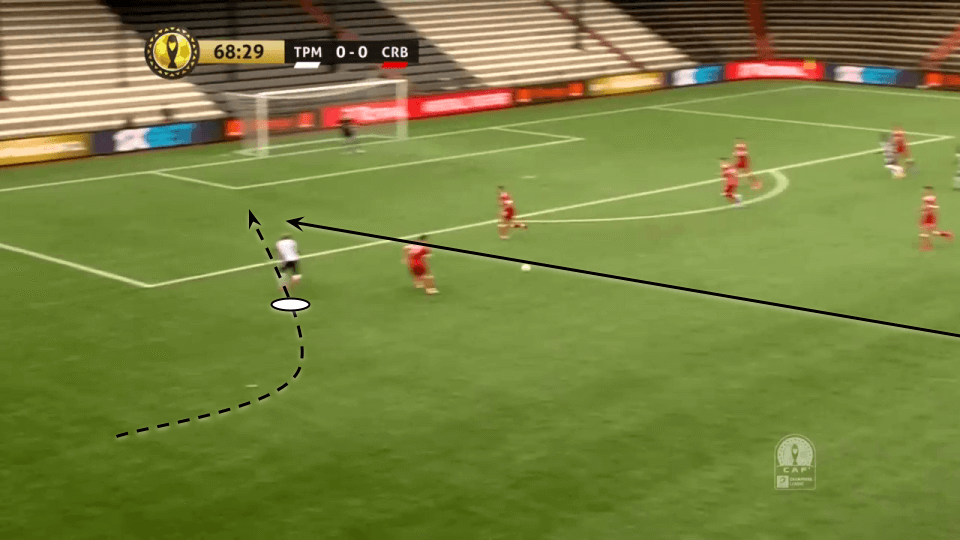
Here, we have reviewed Tshibangu’s movement, some promising signs of how he could contribute in attack apart from his dribbling and his ability to combine. In the next section of the scout report, we’ll have a look at some of the aspects he needs to improve.
Areas of improvement: scoring & decision-making
Despite his great conditions and ability to change and agitate games, Tshibangu still has a lot to improve to become an effective winger at the highest level.
First of all, he doesn’t contribute enough in terms of goals and assists. We have already seen that he gets past rivals and shows some promising signs of being capable of assisting and getting into scoring positions but he just doesn’t do it often enough. In the Vodacom Ligue 1, the Congolese top division, Tshibangu has scored 9 goals and provided 4 assists in 2441 minutes across the last two seasons. These 0.48 goal contributions per 90 are quite good but they go down a lot when we look at his games at a higher level in the CAF Champions League.
At the continental stage, where we have complete data, Tshibangu has registered just 0.23 expected goal contributions per 90 (0.07 xA and 0.16 xG), which isn’t enough for a player of his talent. Let’s see some of the reasons why he has struggled to create goals at a higher level.
First of all, Tshibangu doesn’t get into scoring positions often enough. He needs to be much more active in the box when the attacks come from the right and also run in behind and into central areas more often. His tendency to receive to his feet, dribble and then try to shoot leads to a poor shot selection and too many speculative shots that will rarely become goals, especially considering his finishing isn’t one of his outstanding qualities.
The map below shows all Tshibangu’s shots in his CAF Champions League career. He has only taken three shots from truly dangerous positions and unsurprisingly two of them have ended up in goals. There are too many attempts from far and wide and most of the time, those attempts don’t even hit the goal.
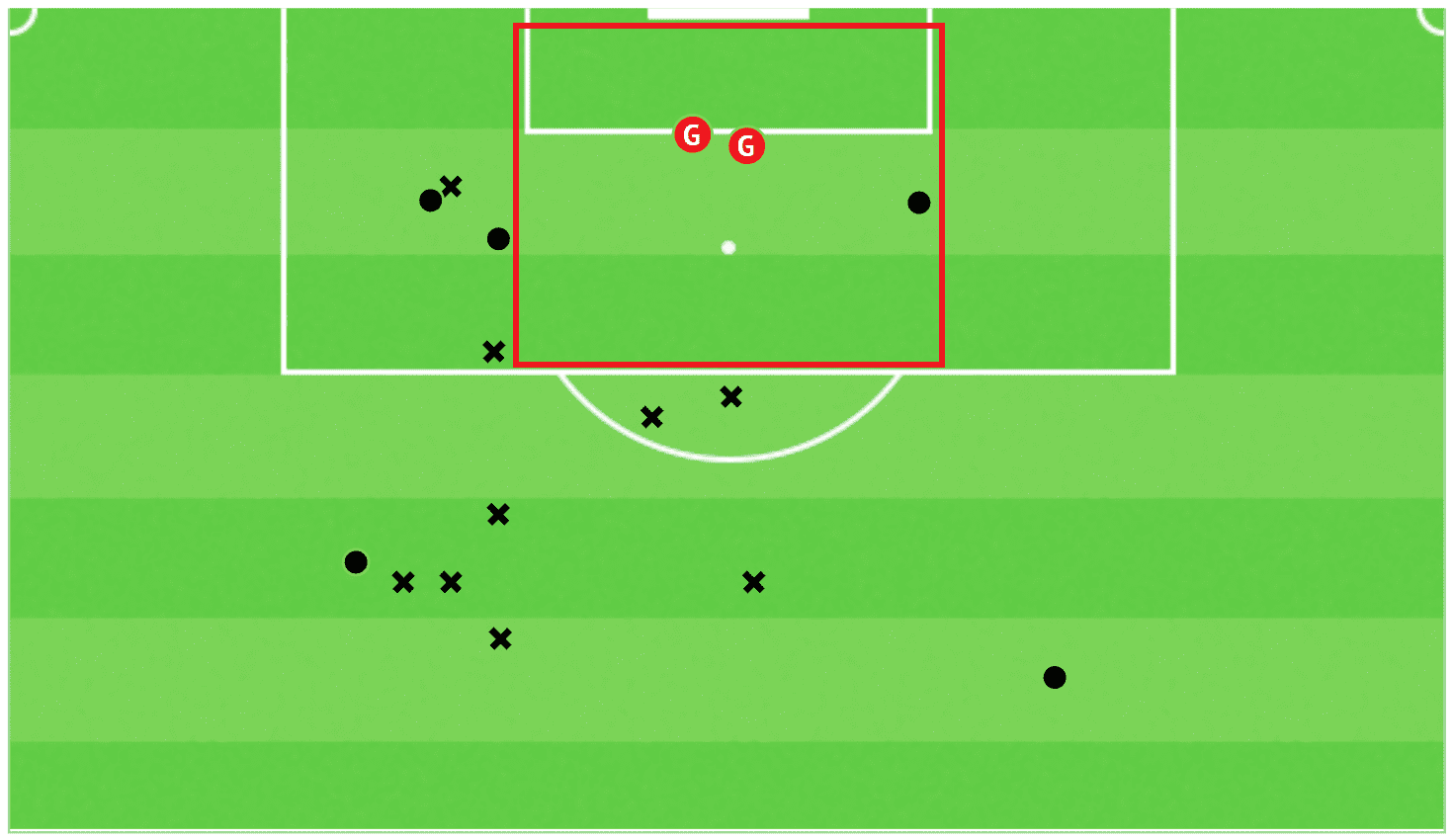
This is an aspect Kompany and his coaching staff will need to work a lot on at Anderlecht. Tshibangu needs to understand he doesn’t have the shooting quality to score goals from difficult positions so he needs to pick other options instead of shooting and also get into better positions from where he can score more easily.
Another aspect the new Anderlecht star needs to improve, as we have mentioned throughout this tactical analysis, is his decision making regarding when to dribble. He completes less than half of the dribbles he attempts, resulting in lots of lost balls. Valuing possession and understanding when he has the advantage to get past his man is key in a winger and Tshibangu still struggles in this aspect.
Finally, Tshibangu will also be expected to create chances for his teammates. The map below showing all his key passes in his 13 CAF Champions League appearances is appalling. Just four chances created in over 800 minutes is a very poor end product for a winger and something he has to improve as soon as possible.
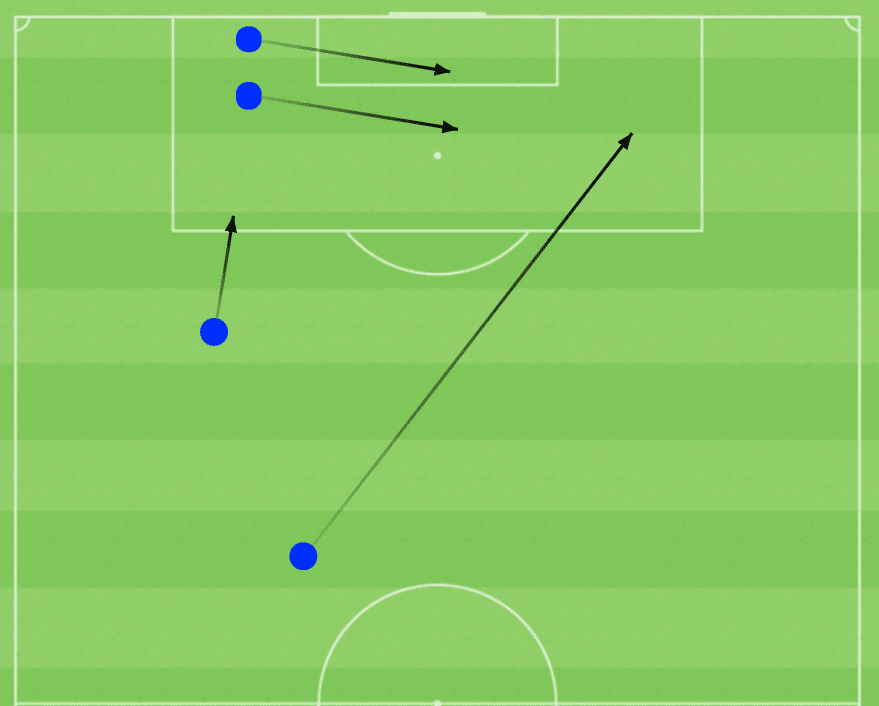
Making a player more creative isn’t easy but there are other things coaches can do to improve Tshibangu’s output. Teaching him what to do after dribbling and which zones to put the ball in in crosses or cutbacks is a way to start while also reinforcing the glimpses of quality he has shown when running at defenders and creating space for a killing pass.
In general, Tshibangu’s areas of improvement are mostly related to his decision-making. If he manages to understand the game better and hears what Anderlecht’s coaching staff will teach him, he can reach a decent level and translate all his talent into goals, assists and dangerous situations.
Conclusion
It’s always exciting to find promising players in relatively unknown or unexplored competitions like the Congolese league and Tshibangu is the latest example of this.
A pacey and skilled winger, this young Congolese has taken a huge step in his career to pursue his dream of playing in the best leagues in the world. He has all the conditions to become a very good player in a few years but he has to focus on improving his weaknesses and listen to all the advice he will receive at his new club.
Luckily, he won’t have language issues and his adaptation should be made easier by the other six Congolese players Anderlecht currently have. If he stays focused and gains the confidence to show all his talent, we will hear a lot about him sooner than later.





Comments